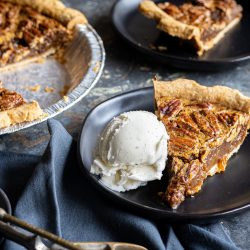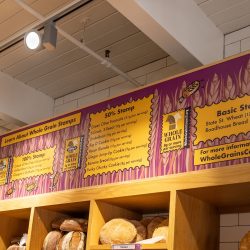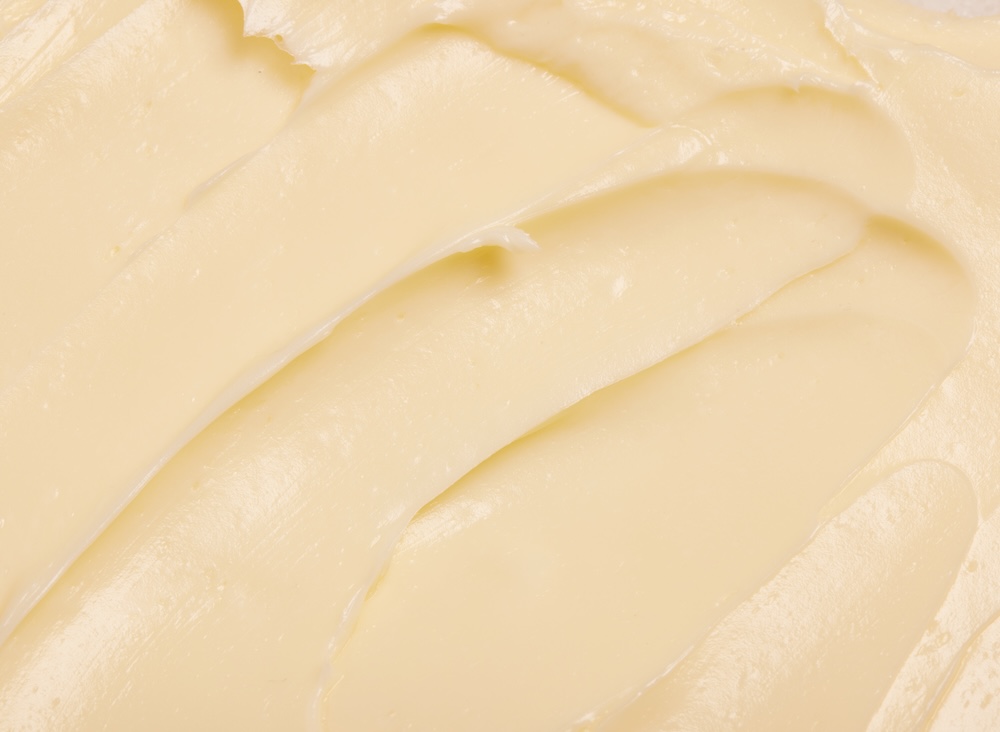
Through October, we’re writing a series of blog posts spotlighting our new partnership with Vermont Creamery and how their award-winning Cultured Butter is elevating our baking game in the Bakehouse Pastry Kitchen to new heights of richness, flavor complexity, and texture.
Vermont Creamery Cultured Butter and Why We Love it!
At the Bakehouse, we’re always trying to make our artisan bread, pastries, and cakes more deeply flavorful by using the best ingredients we can find; enter our most recent discovery–Vermont Creamery’s Cultured Butter with 82% butterfat. Since we began baking with their butter, first with testing over the summer and now in our regular production rotation, it’s had a big impact on the flavor and texture of our Croissants, Danish, Scones, Palmiers, Pie Crusts, and Coffee Cakes. We chose items in which either butter either plays a starring role or is the most important supporting ingredient.
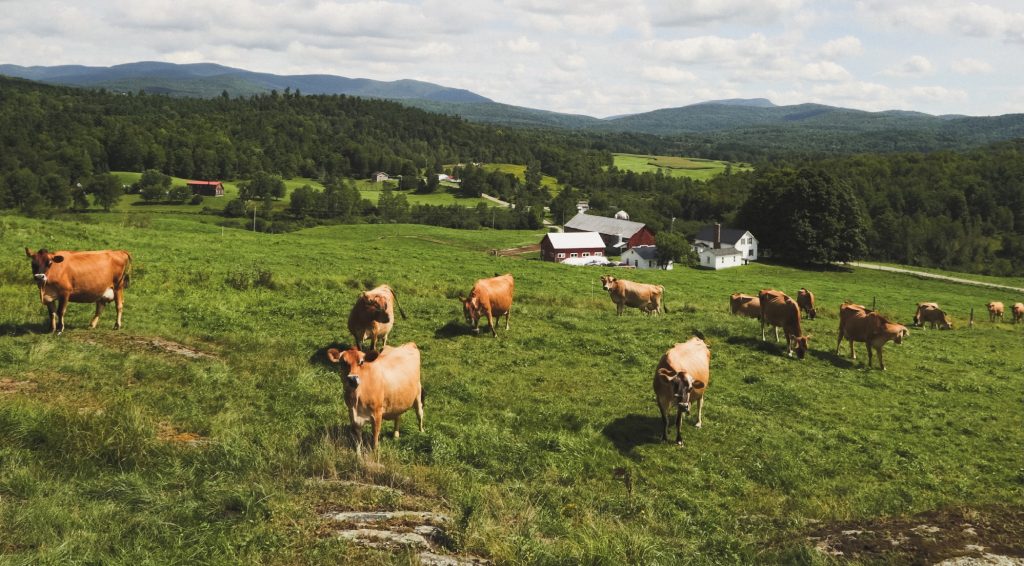
What do we love about Vermont Creamery Cultured Butter? It’s made with 100% Vermont-sourced cow’s milk from multi-generational family dairy farms through the St. Albans Cooperative. They then culture the extracted fresh cream for 20 hours to create a complex flavor with notes of hazelnut and buttermilk and churn into butter. It also contains 82% butterfat, which is higher than the USDA minimum requirement of 80% found in the sweet cream butter we’ve been using for our entire history.
We love the flavor benefits that come from the live cultures and higher butterfat content, as well as the benefit of baking with butter that has less water than sweet cream butter. In making this pivotal switch to Vermont Creamery Cultured Butter, our laminated pastries, scones, and all-butter pie crusts are flakier, our coffee cakes are richer and more tender, and they’re all chock full of complex flavor with good shape and structure that only cultured butter with 82% butterfat can bring.
What’s Cultured Butter & How is it Different from Sweet Cream Butter
Cultured butter is made from pasteurized fresh cow’s milk cream that’s been fermented with live bacterial cultures (similar to those used to make yogurt and cheese), over an extended period of time, ranging anywhere from 6 to 48 hours. This prolonged culturing process thickens and flavors the cream, resulting in a higher butterfat content (typically between 82% and 86%, and sometimes even 90%) and a deeper and more complex taste that’s tangy, rich, and slightly nutty. Once fermented with its fully developed flavor profile, the cultured cream is then churned into butter that’s rich, soft in texture, and golden yellow in color.
American-style sweet cream butter, on the other hand, is churned from pasteurized fresh cream without the addition of live cultures or any period of fermentation. This faster, more simplified butter-making process gives sweet cream butter a mild, sweet flavor that’s much less complex and a lower butterfat content (typically 80%), with the remainder being water and milk solids. The butter is also paler in color than cultured butter.
About Vermont Creamery and the Zingerman’s Partnership
Founded in 1984 by Allison Hooper and Bob Reese, Vermont Creamery has since grown into one of America’s most celebrated artisan dairies. Their fresh and aged goat cheeses, cultured butters, and culinary creams have won over 400 national and international awards. Every one of their artisan dairy products is crafted in Websterville, Vermont by a dedicated team of “Bettermakers”. Proudly rooted in the local community, the Creamery prides itself on blending time-honored craftsmanship with a spirit of innovation and a commitment to sustainability and using business as a force for good. They’ve been a proud Certified B Corporation since 2014, having met rigorous standards for social and environmental performance, accountability, and transparency.

Since the early 1990s, the Creamery’s founders, Allison and Bob, have pushed to make the kind of cultured butter that Allison had experienced as a dairy intern in France a decade earlier. Zingerman’s co-founder, Ari Weinzweig, spoke with Allison about her French internship and subsequent foray into butter making, right around the time Zingerman’s Roadhouse began adding their cultured butter to the restaurant’s bread service. Here’s what she told Ari in 2024:
The butter was developed early on, in the early ’90s. The story is that the farm that I worked on in Brittany had Jersey cows. They were separating cream, and they were selling butter and crème fraiche at the local market. It was so delicious!!! I wanted to make that butter here. Bob and I found a used churn outside a dairy barn and we bought it. We figured out how to use it, and we started making butter. I found this pretty famous French chef in New York, and I decided to take a chance and send him some butter. He called me back, and he was so excited. He said, “This is exactly what the great French chefs in New York are all looking for. It’s the butter of our childhood!” The chefs there loved it, and they really helped us get it off the ground. The chefs knew! They say we make the best butter in the country, and to this day, that’s what we’re known for.
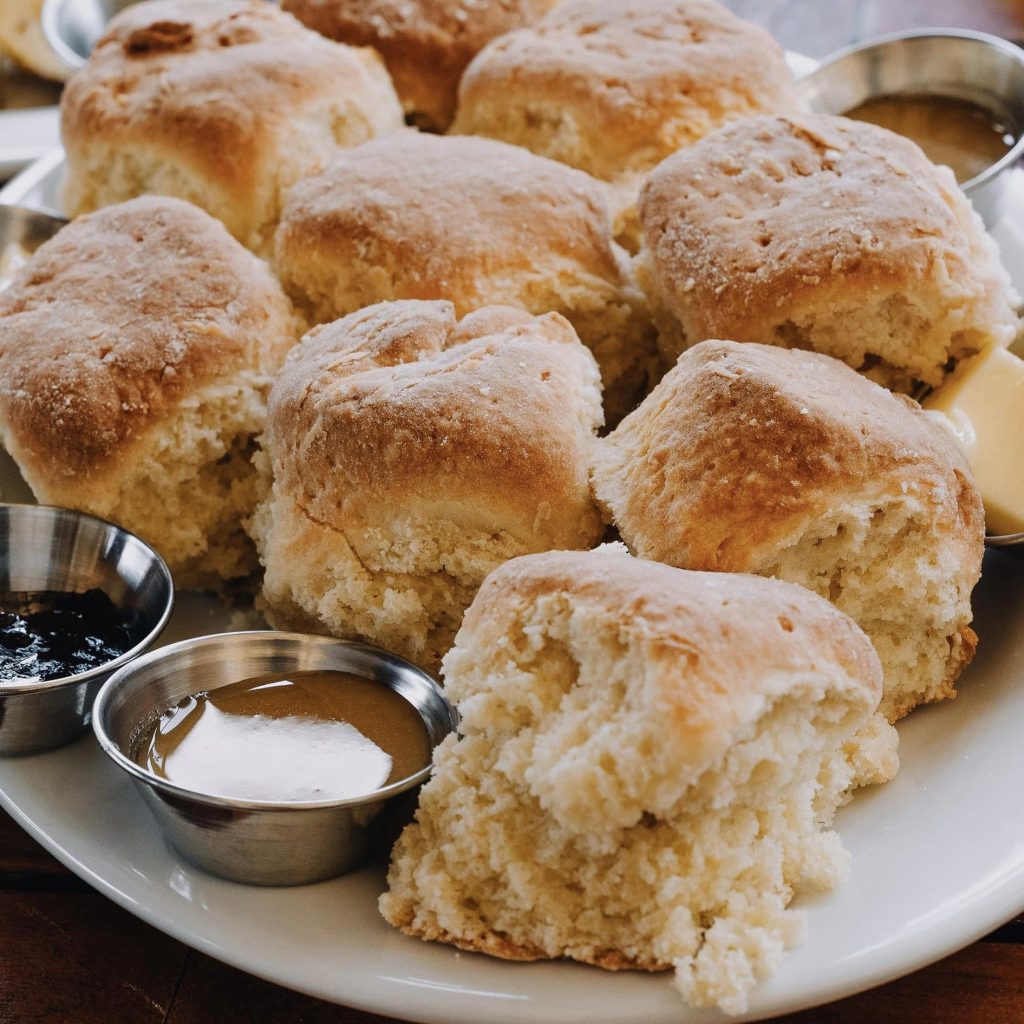
For the past couple of years, Vermont Creamery has been an appreciated supplier of the Zingerman’s Community of Businesses. Their cultured butter is sold in several of our businesses, now makes the Roadhouse’s Biscuits and Butterscotch Pudding outrageously rich and flavorful, and is featured in many Bakehouse items. We invite you to enjoy a taste of Vermont Creamery Cultured Butter in any of these unique Zingerman’s manifestations.
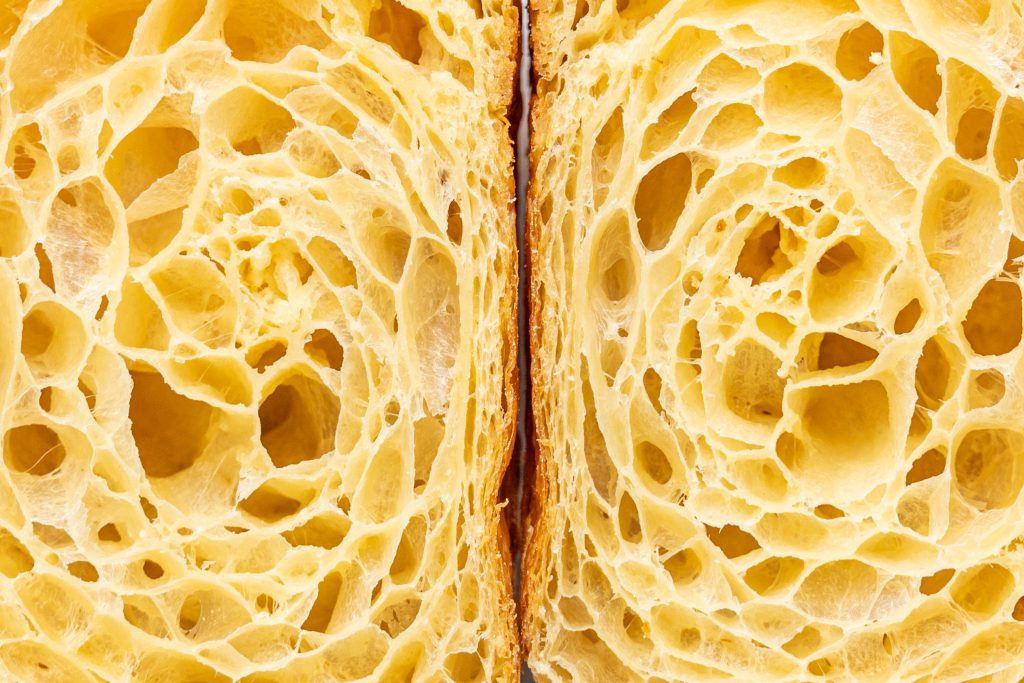
After a long, established career as a Ph.D. art history scholar and art museum curator, Lee, a Michigan native, came to the Bakehouse in 2017 eager to pursue her passion for artisanal baking and to apply her love of history, research, writing, and editing in a new exciting arena. Her first turn at the Bakehouse was as a day pastry baker. She then moved on to retail sales in the Bakeshop, followed by joining the Marketing Team and becoming the Bakehouse’s designated culinary historian. In addition to her retail sales and marketing work, she’s a member of the Bakehouse’s Grain Commission, co-author and editor of the Bakehouse's series of cookbooklets, and a regular contributor to the BAKE! Blog and Zingerman’s Newsletter, where she explores the culinary, cultural, and social history and evolution of the Bakehouse’s artisan baked goods.

